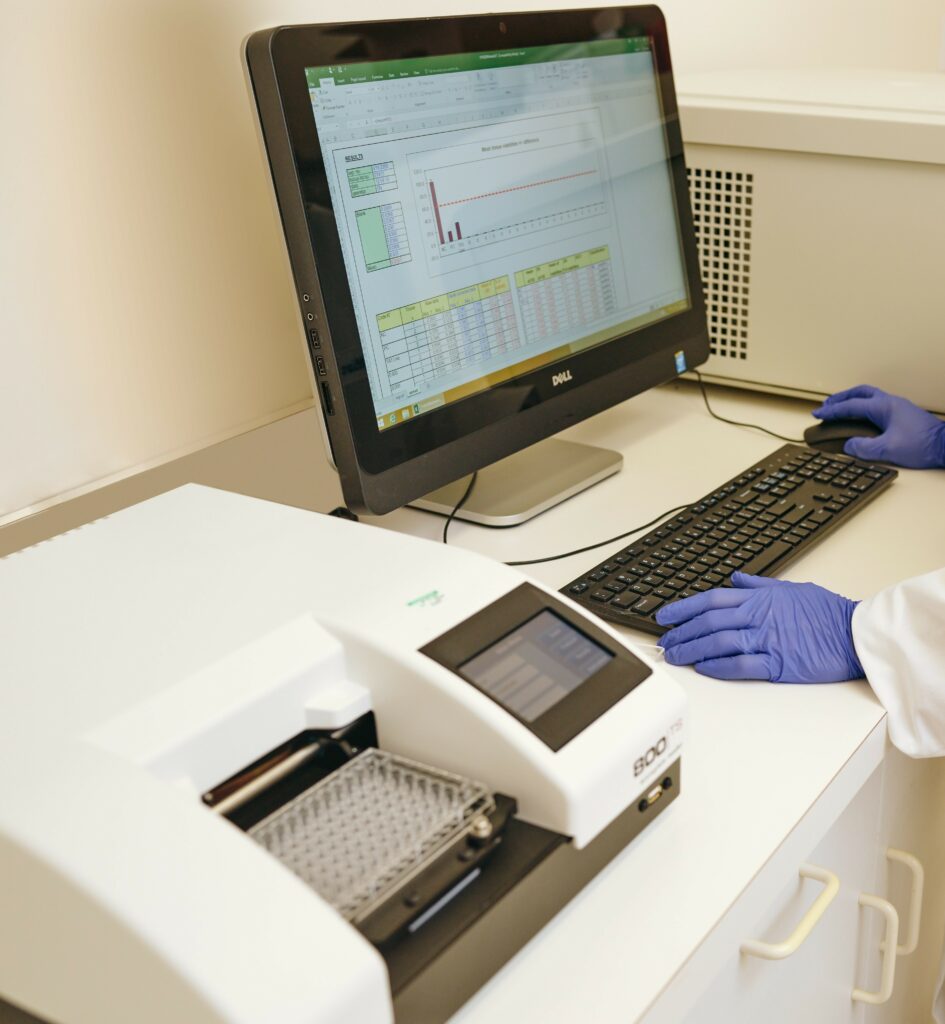What is Toxicology?
Toxicology is the science of poisons, including the effects of those deleterious substances on living organisms. In vivo toxicology is the branch of the science that investigates those effects using laboratory animals upon which testing is conducted. In contrast, in vitro toxicology is the branch of the science that uses test systems other than lab animals upon which testing is conducted.
Brief History of Toxicological Testing
At one time, nearly all toxicological testing was in vivo testing, i.e., utilizing laboratory animals as the test systems. In recent times, scientific, societal, and animal welfare concerns have led the testing industry to refine toxicological methods, reduce the number of animals used, and ultimately replace many in vivo protocols with in vitro methods.
Regulatory Status of In Vitro Toxicological Testing
Regulatory bodies worldwide have become well aware of the utility of in vitro toxicological testing for generating reliable toxicological data. The scientific community has found in vitro toxicological methodologies to be rapid, reproducible, and reliable. Advancements continue and many in vitro assays are submitted to regulatory bodies each year, looking to have them added to the growing list of validated protocols. This process has resulted in a significant reduction in animal testing worldwide.
With respect to the cosmetic industry, jurisdictions such as the European Union (EU) have already mandated the total elimination of animal testing. Although animal testing is still permitted within the US cosmetic industry, many consumers avoid products that have been tested in this manner.
It should also be noted that in 2021, a legislative bill was drafted which would eliminate animal testing from the entire US cosmetic industry supply chain.

CPT and In Vitro Toxicological Testing
For over 30 years, CPT has offered in vitro protocols to our clients that accurately estimate a compound’s toxicological potential. Many of these assays utilize MatTek Corporation’s testing systems. These systems utilize specific human cell types, cultured to form stratified tissues similar in nature to their in vivo counterparts. Cell metabolism assays are performed to objectively determine toxicological profiles for both test articles and the appropriate controls.
Skin Irritation Potential Testing
The MatTek EpiDerm™️ testing platform is utilized in our laboratory to determine skin irritation potential. Two protocols are offered from this platform. The first is the EpiDerm In Vitro Toxicity Test, whereby the ET-50 (estimated time for 50% cellular dysfunction) of “test” and “control” articles is determined. Each ET-50 value is then used to classify the corresponding test article over a continuum ranging from non-irritating to severely irritating.
The second is the EpiDerm Skin Irritation Assay (In Vitro EpiDerm™ Skin Irritation Test (EPI-200-SIT)) which fulfills criteria set forth in the Organization for Economic Cooperation and Development’s (OECD) Test Guideline 439 (In Vitro Skin Irritation: Reconstructed Human Epidermis Test Method). When a test article is assayed with this protocol, the conclusion will state that the article either “is” or “is not” considered a dermal irritant. According to the EU and Global Harmonized System classifications, an irritant is predicted if the mean relative tissue viability of three individual tissues exposed to the test substance is reduced below 50% of the mean viability of the negative controls.
Skin Corrosion Testing
CPT also utilizes the MatTek EpiDerm Skin Corrosion Test which fulfills criteria set forth in OECD TG 431 (In Vitro Skin Corrosion: Reconstructed Human Epidermis (RhE)Test Method). A test article’s corrosivity potential is predicted from the relative mean tissue viabilities obtained after 3-minute and 1-hour treatments when compared to the negative control tissues concurrently treated with distilled water.
An article is classified as “corrosive” if the relative tissue viability after a 3-minute treatment with a test material is decreased below 50%. In addition, materials are classified as “corrosive” if the relative tissue viability after a 1-hour treatment with a test material is decreased below 15%.
Eye Irritation Testing
The MatTek EpiOcular™️ platform is utilized in our laboratory to determine eye irritation potential. Again, two protocols are offered. In the first, EpiOcular In Vitro Toxicity Test, the ET-50 (estimated time for 50% cellular dysfunction) of the test and control articles is determined. Each ET-50 value is then used to classify the corresponding article from non-irritating to extremely irritating.
The second is the EpiOcular Eye Irritation Assay (In Vitro EpiOcular™ Eye Irritation Test (OCL-200-EIT)) fulfills criteria set forth in the Organization for Economic Cooperation and Development’s (OECD) test guideline 492 (Reconstructed human Cornea-like Epithelium (RhCE) test method for identifying chemicals not requiring classification and labeling for eye irritation or serious eye damage).
When a test article is assayed with this protocol, the conclusion will state that the article either is or is not considered an ocular irritant. According to the European Union and Global Harmonized System classifications, if the test article-treated tissue viability is > 60.0% relative to negative control-treated tissue viability, the test article is not requiring classification and labeling (No Category) and no further testing is required.
If the test article-treated tissue viability is < 60.0% relative to negative control-treated tissue viability, then no prediction can be made for the test article and further testing is required. MatTek’s protocol considers articles with a resultant viability < 60.0% to be an irritant and those with a viability > 60.0% to be non-irritating.
CPT also offers the HET-CAM Assay (Hen’s Egg Test – Chorioallantoic Membrane) which is another in vitro assay that estimates ocular irritation potential.
This protocol, in part developed by CPT, utilizes fertilized chicken eggs to estimate potential ocular irritation accurately and relatively inexpensively. Although it is considered an in vitro method, due to the use of a fertilized chicken egg, some might consider it in vivo testing.
A classification scheme is incorporated into the protocol and, where possible, both in vivo and HET-CAM results from CPT’s historical database for formulations similar to that of the test article, are presented in the final report.
Oral Mucosa Irritation Testing
The MatTek EpiOral™️ test is utilized in our laboratory to determine a test article’s oral mucosa tissue irritation potential. In this protocol, the ET-50 (estimated time for 50% cellular dysfunction) of the test and control articles is determined. This laboratory STRONGLY recommends that the Sponsor test their formula alongside a similar, market-leading product since MatTek does not offer a classification scheme.
Vaginal Mucosa Irritation Testing
The MatTek EpiVaginal™️ Test is utilized in our laboratory to determine a test article’s vaginal mucosa tissue irritation potential. In this protocol, the ET-50 (estimated time for 50% cellular dysfunction) of the test and control articles is determined. This laboratory STRONGLY recommends that the Sponsor test their formula alongside a similar, market-leading product since MatTek does not offer a classification scheme.
How can CPT assist you with In Vitro Toxicological Testing?
With over 30 years of in vitro toxicology experience, CPT offers expert testing using various protocols that are reasonably priced, performed in a timely manner and reported within days of completion of the bio-phase. Feel free to contact Steven Nitka, Vice President – In Vitro Toxicology Services at either 973-808-7111 extension 215 or snitka@cptclabs.com for more information. He is looking forward to hearing from you soon.


